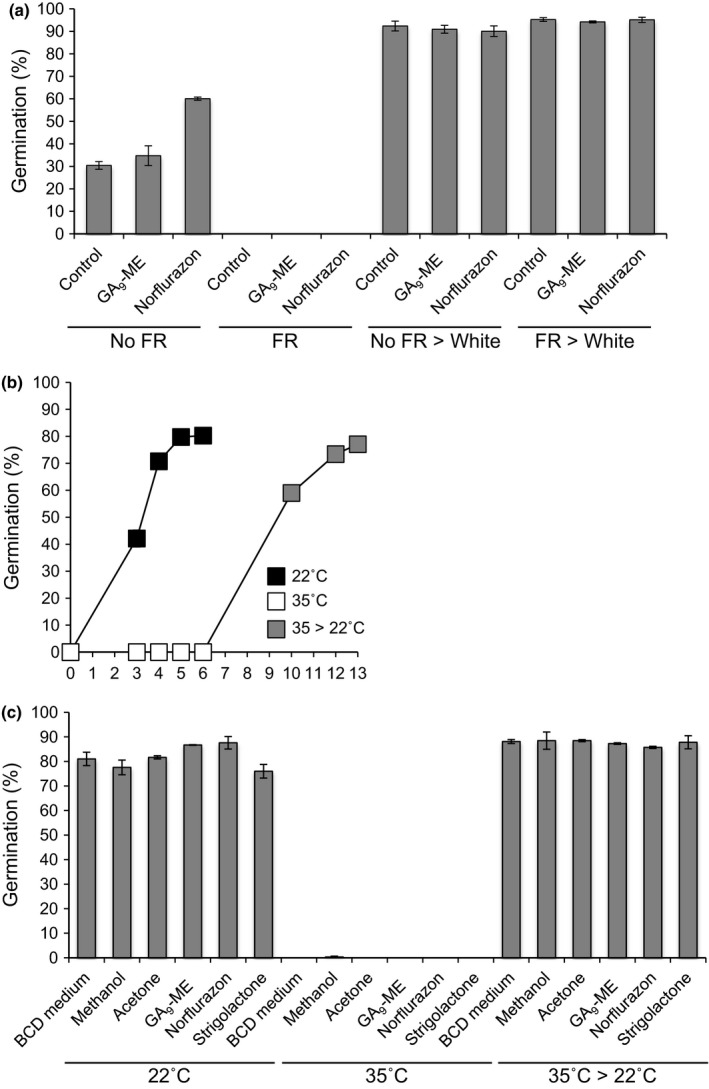Figure 3.

Effects of environmental signals on Physcomitrella spore germination. (a) A pulse of far‐red (FR) light inhibits spore germination and this cannot be rescued by norflurazon or GA9‐methyl ester (GA, gibberellin). Spores plated on control medium or GA9‐methyl ester (GA9‐ME) or norflurazon were treated ± FR light (‘No FR’ and ‘FR’, respectively) and immediately placed in the dark for 7 d. The spores’ germination percentage was measured 7 d after treatment. All spores were then moved to white light for a further 7 d (‘No FR > White’ and ‘FR > White’, under which conditions all spores germinated to completion, showing that the effect of FR light is completely reversible. A Kruskal–Wallis test indicates differences between FR and white light‐treated samples, P < 0.05. Error bars, ± SEM. (b) A temperature of 35°C inhibits spore germination and this is completely reversible when spores are returned to 22°C. (c) High‐temperature inhibition of spore germination cannot be rescued by norflurazon, GA9‐methyl ester or the synthetic strigolactone analogue GR24 (‘strigolactone’ on the graph). Spores were germinated for 7 d at either 22°C or 35°C. The 35°C‐treated spores were then transferred to 22°C for another 7 d (‘35°C > 22°C’). A Kruskal–Wallis test indicated differences between 35°C and 22°C spores, P < 0.05. Error bars, ± SEM.
